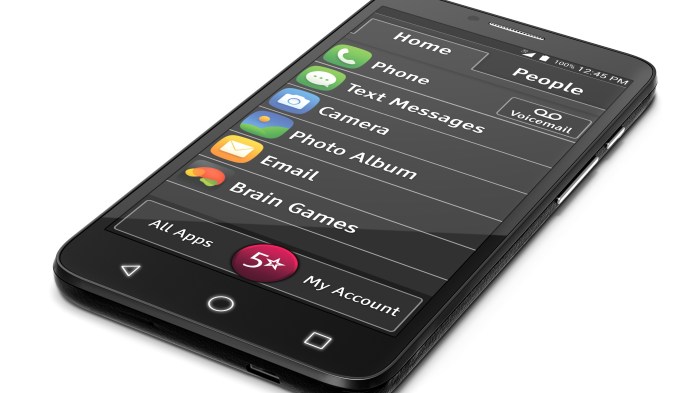Elderly smartphones have become an essential tool for seniors, empowering them to stay connected, engaged, and independent in a rapidly digitalizing world. The demand for these devices is steadily increasing, driven by a growing elderly population and a desire to bridge the digital divide.
Elderly smartphones are designed with accessibility and ease of use in mind, featuring large fonts, clear icons, intuitive controls, and user-friendly interfaces. They also offer a range of features specifically tailored to the needs of seniors, including emergency call buttons, medication reminders, health monitoring apps, and social media platforms for staying connected with loved ones.
Challenges and Opportunities in the Elderly Smartphone Market
The elderly smartphone market presents a unique set of challenges and opportunities for manufacturers and developers. Understanding these dynamics is crucial for creating devices and services that cater to the specific needs of this growing demographic.
Challenges in the Elderly Smartphone Market
The elderly smartphone market faces several challenges, primarily stemming from the unique needs and preferences of senior users.
- User Interface Complexity: Senior citizens often find navigating complex user interfaces with numerous menus and settings overwhelming. This can lead to frustration and a reluctance to use smartphones.
- Accessibility Features: Many smartphones lack adequate accessibility features, such as larger fonts, high-contrast displays, and voice control options, which are essential for seniors with visual or hearing impairments.
- Security and Privacy Concerns: Seniors are particularly vulnerable to online scams and data breaches. Manufacturers and developers must prioritize security and privacy features to protect their users.
- Limited Digital Literacy: A significant portion of the elderly population lacks the digital literacy required to confidently use smartphones. This necessitates user-friendly interfaces and extensive support resources.
- Cost and Affordability: High-end smartphones can be expensive, making them inaccessible to many seniors. Manufacturers must consider cost-effective options to make smartphones available to a wider range of users.
Opportunities for Innovation and Growth
Despite the challenges, the elderly smartphone market presents significant opportunities for innovation and growth.
- Simplified User Interfaces: Designing intuitive and easy-to-use interfaces with large icons, clear menus, and voice control options can significantly improve the smartphone experience for seniors.
- Enhanced Accessibility Features: Incorporating features like larger fonts, high-contrast displays, voice control, and text-to-speech capabilities can make smartphones accessible to seniors with disabilities.
- Health and Wellness Apps: Smartphones can be powerful tools for promoting healthy aging. Developers can create apps for tracking fitness, managing medications, and staying connected with healthcare providers.
- Social Connection Apps: Senior citizens often face social isolation. Apps that facilitate communication, video calls, and social networking can help seniors stay connected with loved ones.
- Personalized Content and Services: Tailoring content and services to the interests and needs of seniors can make smartphones more engaging and relevant.
Bridging the Digital Divide, Elderly smartphone
Technology can play a vital role in bridging the digital divide and empowering seniors. By providing access to information, communication, and entertainment, smartphones can enhance the quality of life for seniors and promote social inclusion.
- Online Learning Opportunities: Smartphones can provide access to online learning platforms, enabling seniors to acquire new skills, pursue hobbies, and stay intellectually stimulated.
- Remote Healthcare Services: Telemedicine apps allow seniors to consult with healthcare professionals remotely, reducing the need for frequent hospital visits.
- Financial Management Tools: Secure banking apps and online bill payment services make it easier for seniors to manage their finances.
- Community Engagement: Smartphones can facilitate communication with local community organizations, enabling seniors to participate in social activities and stay informed about local events.
Conclusive Thoughts: Elderly Smartphone
As technology continues to evolve, elderly smartphones are becoming increasingly sophisticated, offering a wealth of features and benefits for seniors. By embracing these devices, older adults can enjoy a more fulfilling and connected life, actively participating in the digital world and staying engaged with their communities.
Choosing a smartphone for an elderly person often means prioritizing ease of use and accessibility features. But battery life is another crucial consideration, as seniors may not be as tech-savvy when it comes to charging their devices. Fortunately, there are smartphones with longer battery life available, allowing seniors to stay connected and engaged without worrying about constantly needing a charger.
 Informatif Berita Informatif Terbaru
Informatif Berita Informatif Terbaru
